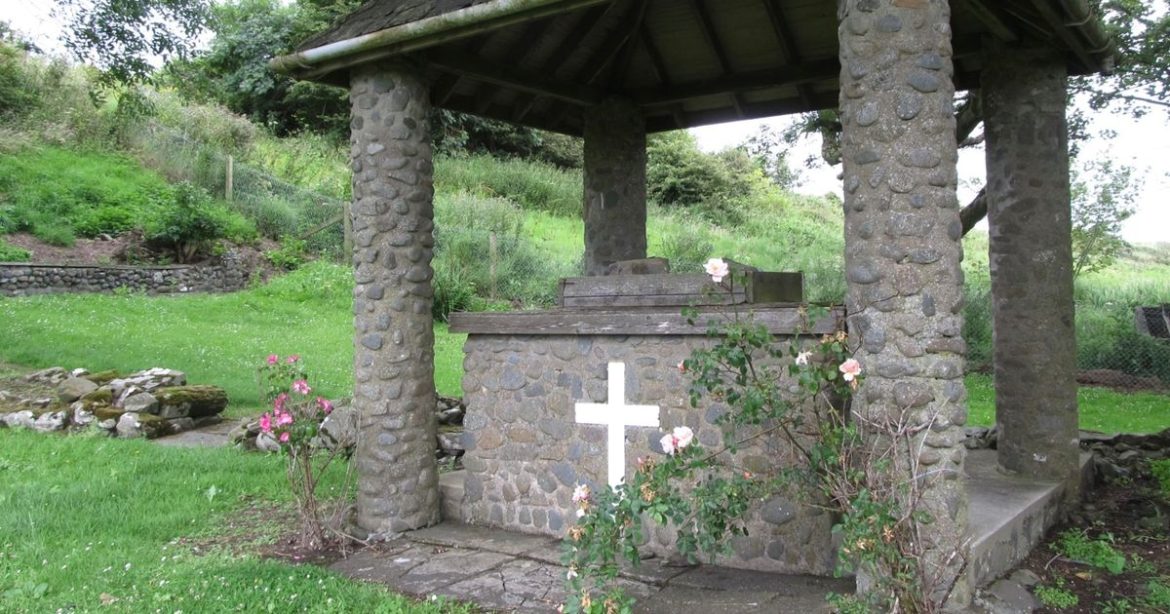Nestled in County Down near Portaferry are three medieval wells, each with a specific function, that supposedly hold water believed to have sacred powers – and they make for the perfect day trip.
For fans of the mystic, there’s an ethereal site in Northern Ireland that’s perfect if you want to get your fix of otherworldly powers.
Nestled in County Down near Portaferry are three medieval wells, each with a specific function, that supposedly hold water believed to have sacred powers. The wells are considered to be tributes to a saint of whom there is no physical evidence, but who appears strongly, and frequently, in spoken lores of the region.
Named after Saint Cooey (Saint Cu’Mhaighe) who lived in the seventh century, these wells are one of the many sites in the local area christened after the holy man, including Lough Cowey.
No tangible documentary evidence exists when it comes to Saint Cooey, and the Holy Wells are considered to be physical relics of his alleged existence. There’s also a church near St Cooey’s Wells, believed to date back to the seventh century, of which only the foundation stones remain. Scattered throughout the site are small headstones marking the graves of saints and some early Christians.
Saint Cooey is said to have prayed and performed miracles on a rock along the nearby shore. The smooth, flat stone bears indentations that are believed to mark where he placed his hands and knees during prayer.
In the mid-1970s, the site underwent extensive restoration by members of the local parish and a local farmer, with a modern altar being constructed to house some of the stones. The tradition of making a pilgrimage to Cooey’s Wells on the Sunday closest to the feast of Saints Peter and Paul continues to this day.
What’s magical about these wells?
According to local tales, the water that springs from these wells possesses healing properties. There are three distinct wells, one for cleansing the hands, one for washing the eyes, and one for drinking. One legend maintains that the water stays cold even when boiled.
The water from these wells is said to alleviate eye infections — a common ailment in that era, as people used to live in houses with turf fires that were poorly-ventilated. The well water contains sodium chloride, a compound still found in artificial tears and contact lens solution, and this could be the reason behind the well’s ‘magical powers’. Or they could just be magical, who knows when it comes to Ireland?
The wells signify the location where it’s believed the saint’s temple once stood. The occasional pilgrims still come to pray and immerse themselves in the mystical ambiance, and you can tie a ribbon to the nearby wishing tree for good luck.
Alongside the Wells, there is a ‘Fairy Tree’ – easily identified by the vibrant rags and cloths tied to it. It’s clear that many have visited to offer prayers and make prayer requests.
187 holy well sites have been marked by the Northern Ireland Sites and Monuments Record (NISMR) in the region, while the Republic of Ireland boasts a staggering 2,996 of these sites.
Getting there
The wells are situated about three miles outside the town of Portaferry. From the town centre, head out via Windmill Hill and descend the other side toward Ballyfounder Road.
Continue following this road as it curves to the right and the wells are located on the right. It’s worth noting that the signs are easy to overlook as they’re low to the ground.
#Magical #wells #Northern #Ireland #healing #powers #fairy #trees

